Contents
Acknowledgements
Chapter 1. Introduction
About the Book
Using the Book
Part I. Theory
Chapter 2. Theory Introduction
Three Pillars of Sound Design
Chapter 3. Physical Sound
Elementary Physics
Materials
Waves
Boundaries
Analogues
Acknowledgements
References
Chapter 4. Oscillations
Oscillators
Simple Harmonic Oscillators
Complex Harmonic Oscillators
Driven Oscillations and Resonance
References
Chapter 5. Acoustics
Acoustic Systems
Intensity and Attenuation
Other Propagation Effects
Acoustic Oscillations
Acknowledgements
References
Chapter 6. Psychoacoustics
Perceiving Sounds
Sound Cognition
Auditory Scene Analysis
Auditory Memory
Listening Strategies
Physiological Responses to Sound
Sound, Language, and Knowledge
Exercises
Acknowledgements
References
Chapter 7. Digital Signals
Signals
Graphs
Generating Digital Waveforms
Acknowledgements
References
Part II. Tools
Chapter 8. Tools Introduction
What You Will Need
Tools for Sound Design
Supporting Tools
Chapter 9. Starting with Pure Data
Pure Data
How Does Pure Data Work?
Message Data and GUI Boxes
Getting Help with Pure Data
Exercises
References
Chapter 10. Using Pure Data
Basic Objects and Principles of Operation
Working with Time and Events
Data Flow Control
List Objects and Operations
Input and Output
Working with Numbers
Common Idioms
Chapter 11. Pure Data Audio
Audio Objects
Audio Objects and Principles
References
Chapter 12. Abstraction
Subpatches
Instantiation
Editing
Parameters
Defaults and States
Common Abstraction Techniques
Chapter 13. Shaping Sound
Amplitude-Dependent Signal Shaping
Periodic Functions
Other Functions
Time-Dependent Signal Shaping
References
Chapter 14. Pure Data Essentials
Channel Strip
Audio File Tools
Events and Sequencing
Effects
Acknowledgements
References
Part III. Technique
Chapter 15. Technique Introduction
Techniques of Sound Design
References
Chapter 16. Strategic Production
Working Methods
SE Approaches
Requirements Analysis Process
Research
Creating a Model
Analysis
Methods
Implementation
Parameterisation
Practice and Psychology
References
Chapter 17. Technique 1 Summation
Additive Synthesis
Discrete Summation Synthesis
Precomputation
References
Chapter 18. Technique 2 Tables
Wavetable Synthesis
Practical Wavetables
Vector Synthesis
Wavescanning Synthesis
References
Chapter 19. Technique 3 Nonlinear Functions
Waveshaping
Chebyshev Polynomials
References
Chapter 20. Technique 4 Modulation
Amplitude Modulation
Adding Sidebands
Cascade AM, with Other Spectra
Single Sideband Modulation
Frequency Modulation
References
Chapter 21. Technique 5 Grains
Granular Synthesis
Time and Pitch Alteration
References
Chapter 22. Game Audio
Virtual Reality Fundamentals
Samples or Procedural Audio?
Traditional Game Audio Engine Functions
Procedural Audio Advantages
Challenges for New Game Audio Systems
References
Part IV. Practicals
Chapter 23. Practicals Introduction
Practical Synthetic Sound Design
Practical Series Artificial Sounds
Artificial Sounds
The Practicals
Chapter 24. Practical 1 Pedestrians
Aims
Analysis
Model
Method
DSP Implementation
Results
Conclusions
Exercises
References
Chapter 25. Practical 2 Phone Tones
Aims
Analysis
Model
Method
DSP Implementation
Results
Conclusions
Exercises
References
Chapter 26. Practical 3 DTMF Tones
Aims
Analysis
Model
Method
DSP Implementation
Results
Conclusions
Exercises
References
Chapter 27. Practical 4 Alarm Generator
Aims
Analysis
Model
Method
DSP Implementation
Results
Conclusions
Exercises
Chapter 28. Practical 5 Police
Aims
Analysis
Model
Method
DSP Implementation
Spectral Approximation in the Time Domain
Results
Conclusions
Exercises
Practical Series Idiophonics
Simple Material Interactions
The Practicals
References
Chapter 29. Practical 6 Telephone Bell
Aims
Analysis
Model
Method
DSP Implementation
Results
Conclusions
Exercises
References
Chapter 30. Practical 7 Bouncing
Aims
Analysis
Model
Method
Implementation
Results
Conclusions
Exercises
Chapter 31. Practical 8 Rolling
Aims
Analysis
Model
Model
Method
Implementation
Results
Conclusions
Exercises
References
Chapter 32. Practical 9 Creaking
Aims
Analysis
DSP Implementation
Results
Conclusions
Exercises
References
Chapter 33. Practical 10 Boing
Aims
Analysis
Model
Method
DSP Implementation
Results
Conclusions
Exercises
References
Practical Series Nature
Natural Elements
The Practicals
Chapter 34. Practical 11 Fire
Aims
Analysis
Model
Method
DSP Implementation
Putting It All Together
Results
Conclusions
Exercises
References
Chapter 35. Practical 12 Bubbles
Aims
Analysis
Model
Method
DSP Implementation
Polyphony
Results
Conclusions
Exercises
References
Acknowledgements
Chapter 36. Practical 13 Running Water
Aims
Analysis
Model
Method
DSP Implementation
Results
Conclusions
Exercises
References
Chapter 37. Practical 14 Pouring
Aims
Analysis
Model
Method
DSP Implementation
Results
Conclusions
Exercises
References
Chapter 38. Practical 15 Rain
Aims
Analysis
Model
Method
DSP Implementation
Results
Conclusions
Exercises
Acknowledgements
References
Chapter 39. Practical 16 Electricity
Aims
Analysis
Model
Method
DSP Implementation
Results
Conclusions
Exercises
References
Chapter 40. Practical 17 Thunder
Aims
Analysis
Model
Method
DSP Implementation
Results
Conclusions
Exercises
Acknowledgements
References
Chapter 41. Practical 18 Wind
Aims
Analysis
Model
Method
DSP Implementation
Results
Conclusions
Exercises
Practical Series Machines
Machines
The Practicals
Chapter 42. Practical 19 Switches
Aims
Analysis
Model
Method
DSP Implementation
Results
Conclusions
Exercises
Chapter 43. Practical 20 Clocks
Aims
Analysis
Model
Method
DSP Implementation
Results
Conclusions
Exercises
Reference
Chapter 44. Practical 21 Motors
Aims
Analysis
Model
Method
DSP Implementation
Results
Conclusions
Exercises
References
Chapter 45. Practical 22 Cars
Aims
Analysis
Model
Method
DSP Implementation
Results
Conclusions
Exercises
Chapter 46. Practical 23 Fans
Aims
Analysis
Model
Method
Implementation
Results
Conclusions
Exercises
Chapter 47. Practical 24 Jet Engine
Aims
Analysis
Model
Method
DSP Implementation
Results
Conclusions
Exercises
Acknowledgements
Chapter 48. Practical 25 Helicopter
Aims
Analysis
Model
Method
DSP Implementation
Results
Conclusions
Exercises
References
Practical Series Lifeforms
Living Things
Behaviour
The Practicals
Chapter 49. Practical 26 Footsteps
Aims
Analysis
Model
Method
Implementation
Results
Conclusions
Exercises
References
Chapter 50. Practical 27 Insects
Aims
Analysis
Model
Method
Implementation
Field Cricket
Field Cricket 2
Cicada
Housefly
Results
Conclusions
Exercises
Acknowledgements
References
Chapter 51. Practical 28 Birds
Aims
Analysis
Model
Method
DSP Implementation
Results
Conclusions
Exercises
References
Chapter 52. Practical 29 Mammals
Aims
Analysis
Model
Method
DSP Implementation
Conclusions
Exercises
References
Practical Series Mayhem
Killing Things
The Practicals
Acknowledgements
Chapter 53. Practical 30 Guns
Aims
Analysis
Model
Method
DSP Implementation
Weapon Sound Variations
Reload
Results
Conclusions
Exercises
References
Chapter 54. Practical 31 Explosions
Aims
Analysis
Model
Method
DSP Implementation
Results
Conclusions
Exercises
References
Chapter 55. Practical 32 Rocket Launcher
Aims
Analysis
Model
Method
DSP Implementation
Results
Conclusions
Exercises
Practical Series Science Fiction
Sci-Fi, Fantasy, and the Unreal
Synthesisers and Sci-Fi Sound Design
The Practicals
Chapter 56. Practical 33 Transporter
Aims
Analysis
Model
Method
DSP Implementation
Results
Conclusions
Exercises
References
Chapter 57. Practical 34 R2D2
Aims
Analysis
Model
Method
DSP Implementation
Results
Conclusions
Exercises
Chapter 58. Practical 35 Red Alert
Aims
Analysis Spock?
Model
Method
DSP Implementation
Results
Conclusions
Exercises
Cover Image Sources
Index
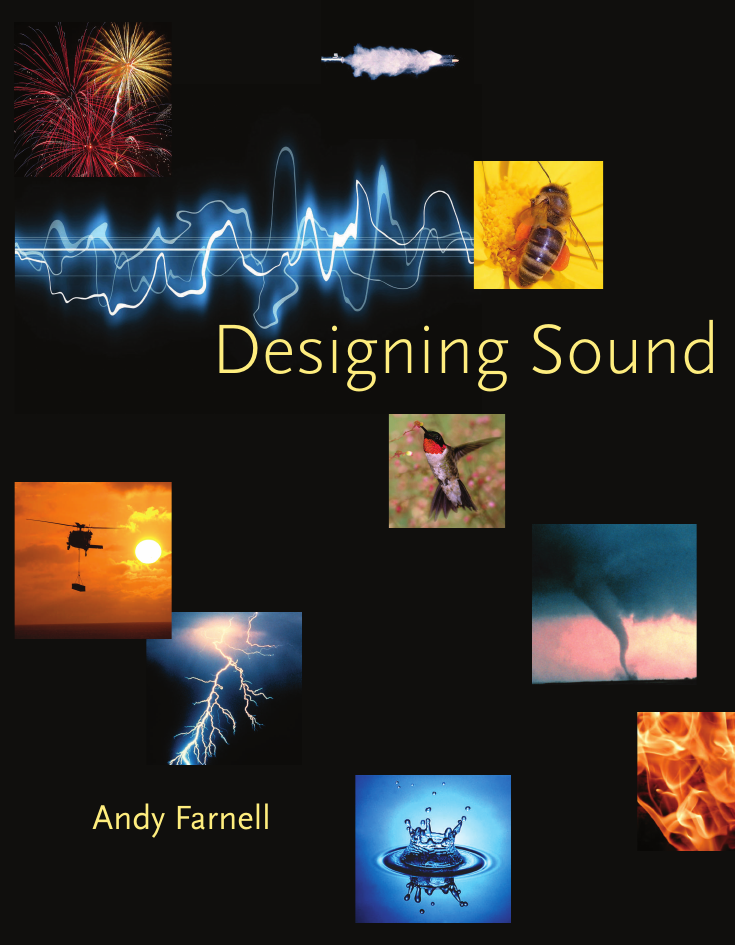
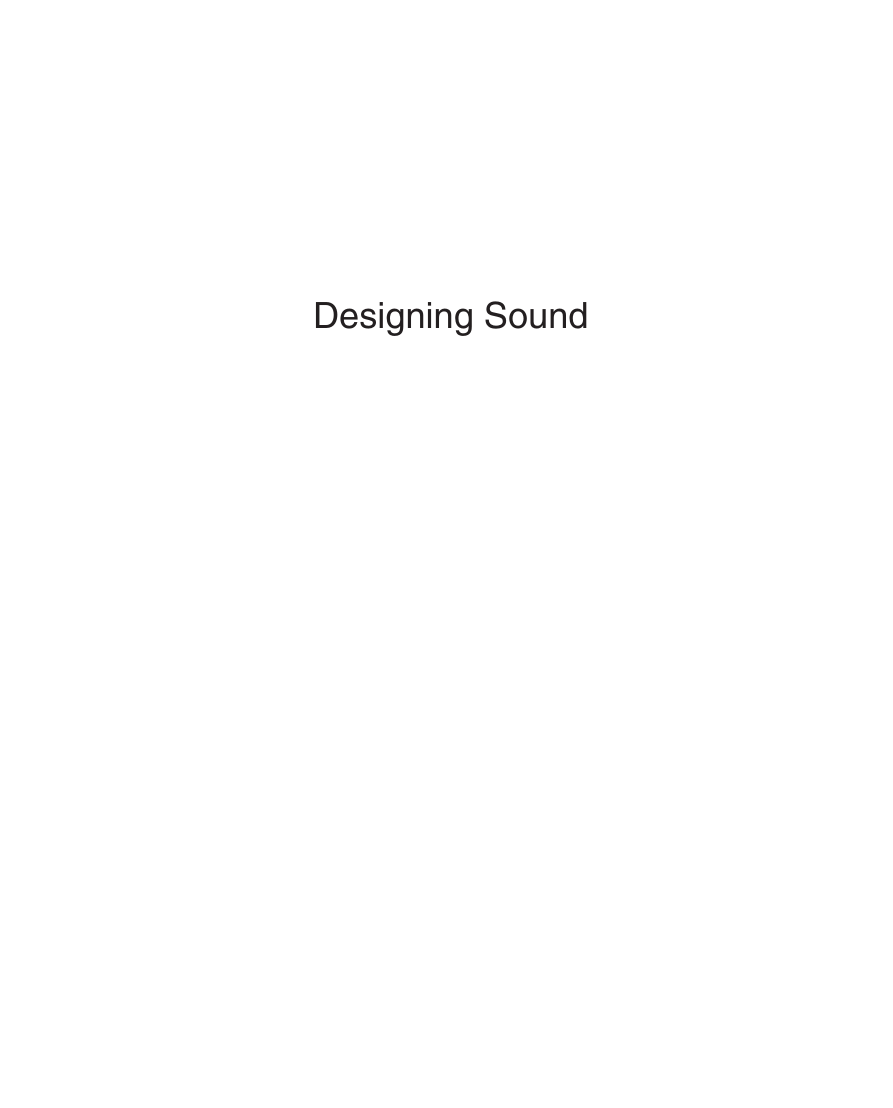

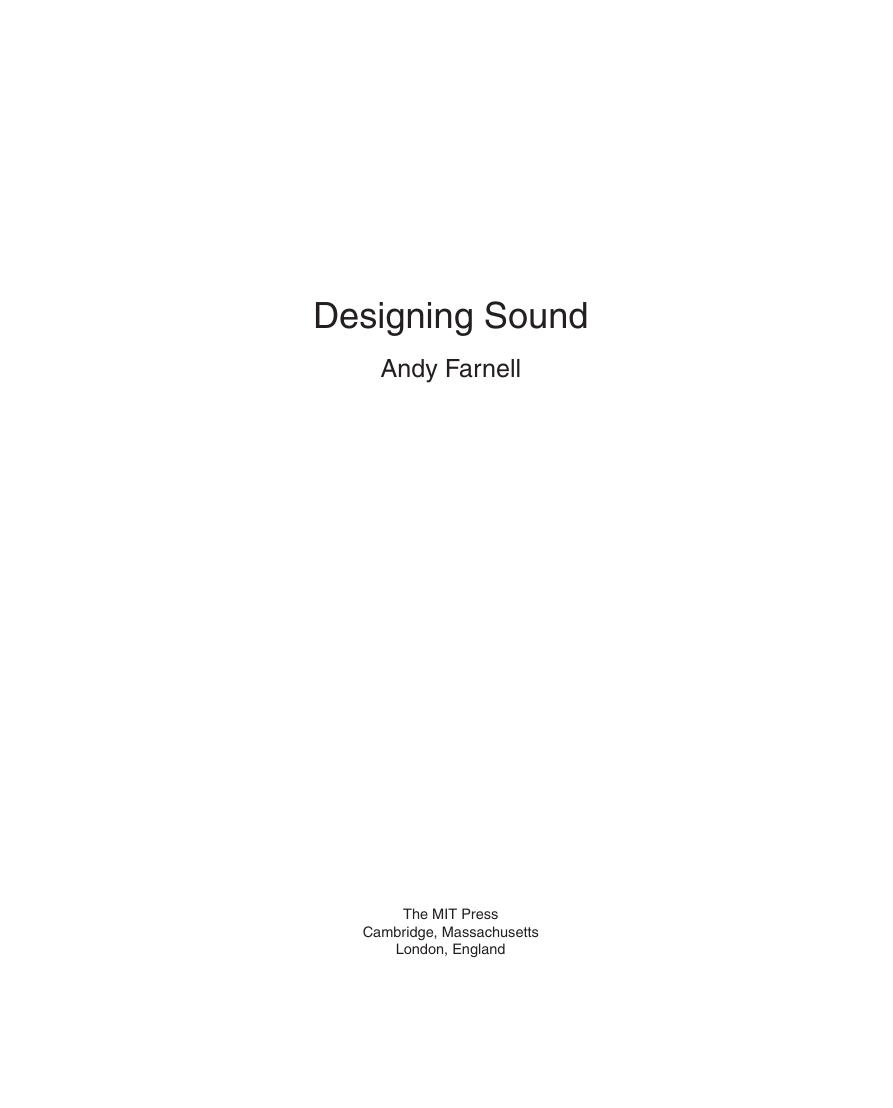
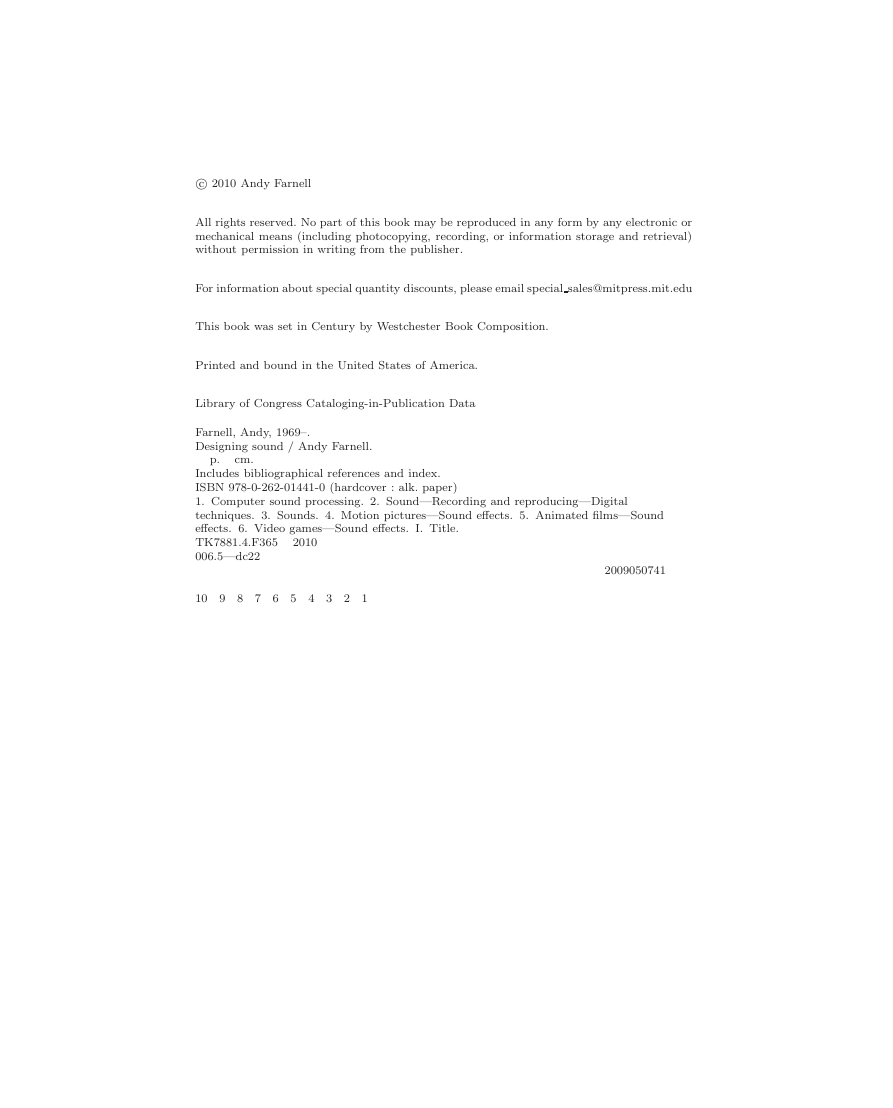


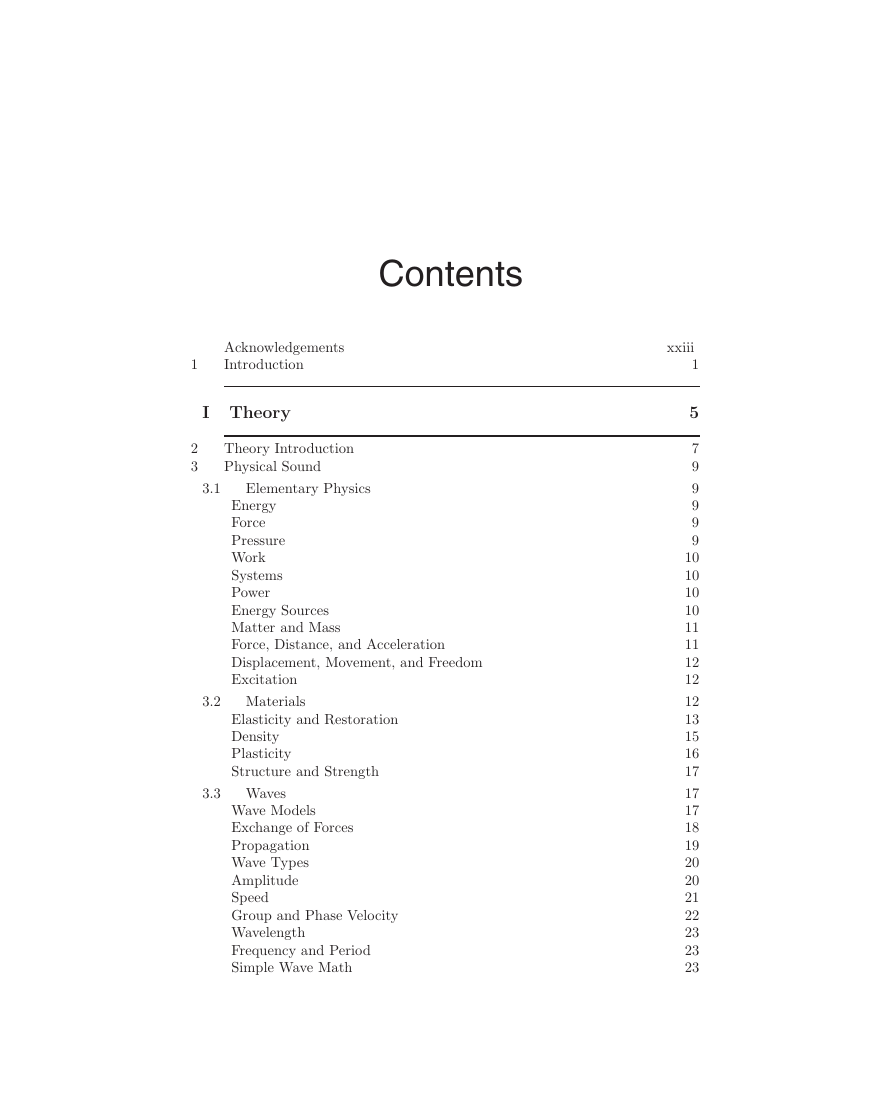








 2023年江西萍乡中考道德与法治真题及答案.doc
2023年江西萍乡中考道德与法治真题及答案.doc 2012年重庆南川中考生物真题及答案.doc
2012年重庆南川中考生物真题及答案.doc 2013年江西师范大学地理学综合及文艺理论基础考研真题.doc
2013年江西师范大学地理学综合及文艺理论基础考研真题.doc 2020年四川甘孜小升初语文真题及答案I卷.doc
2020年四川甘孜小升初语文真题及答案I卷.doc 2020年注册岩土工程师专业基础考试真题及答案.doc
2020年注册岩土工程师专业基础考试真题及答案.doc 2023-2024学年福建省厦门市九年级上学期数学月考试题及答案.doc
2023-2024学年福建省厦门市九年级上学期数学月考试题及答案.doc 2021-2022学年辽宁省沈阳市大东区九年级上学期语文期末试题及答案.doc
2021-2022学年辽宁省沈阳市大东区九年级上学期语文期末试题及答案.doc 2022-2023学年北京东城区初三第一学期物理期末试卷及答案.doc
2022-2023学年北京东城区初三第一学期物理期末试卷及答案.doc 2018上半年江西教师资格初中地理学科知识与教学能力真题及答案.doc
2018上半年江西教师资格初中地理学科知识与教学能力真题及答案.doc 2012年河北国家公务员申论考试真题及答案-省级.doc
2012年河北国家公务员申论考试真题及答案-省级.doc 2020-2021学年江苏省扬州市江都区邵樊片九年级上学期数学第一次质量检测试题及答案.doc
2020-2021学年江苏省扬州市江都区邵樊片九年级上学期数学第一次质量检测试题及答案.doc 2022下半年黑龙江教师资格证中学综合素质真题及答案.doc
2022下半年黑龙江教师资格证中学综合素质真题及答案.doc